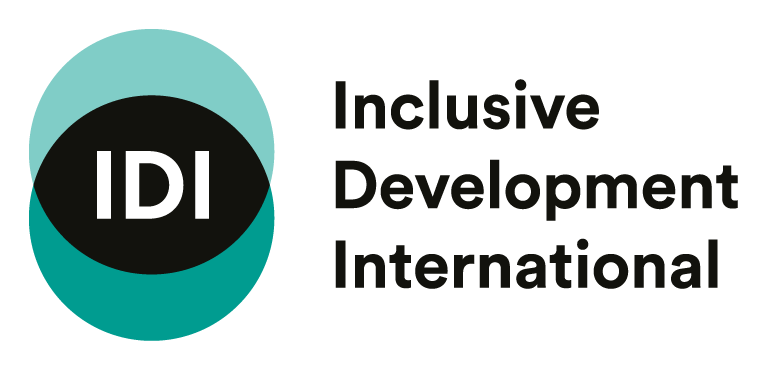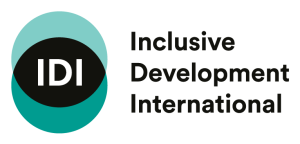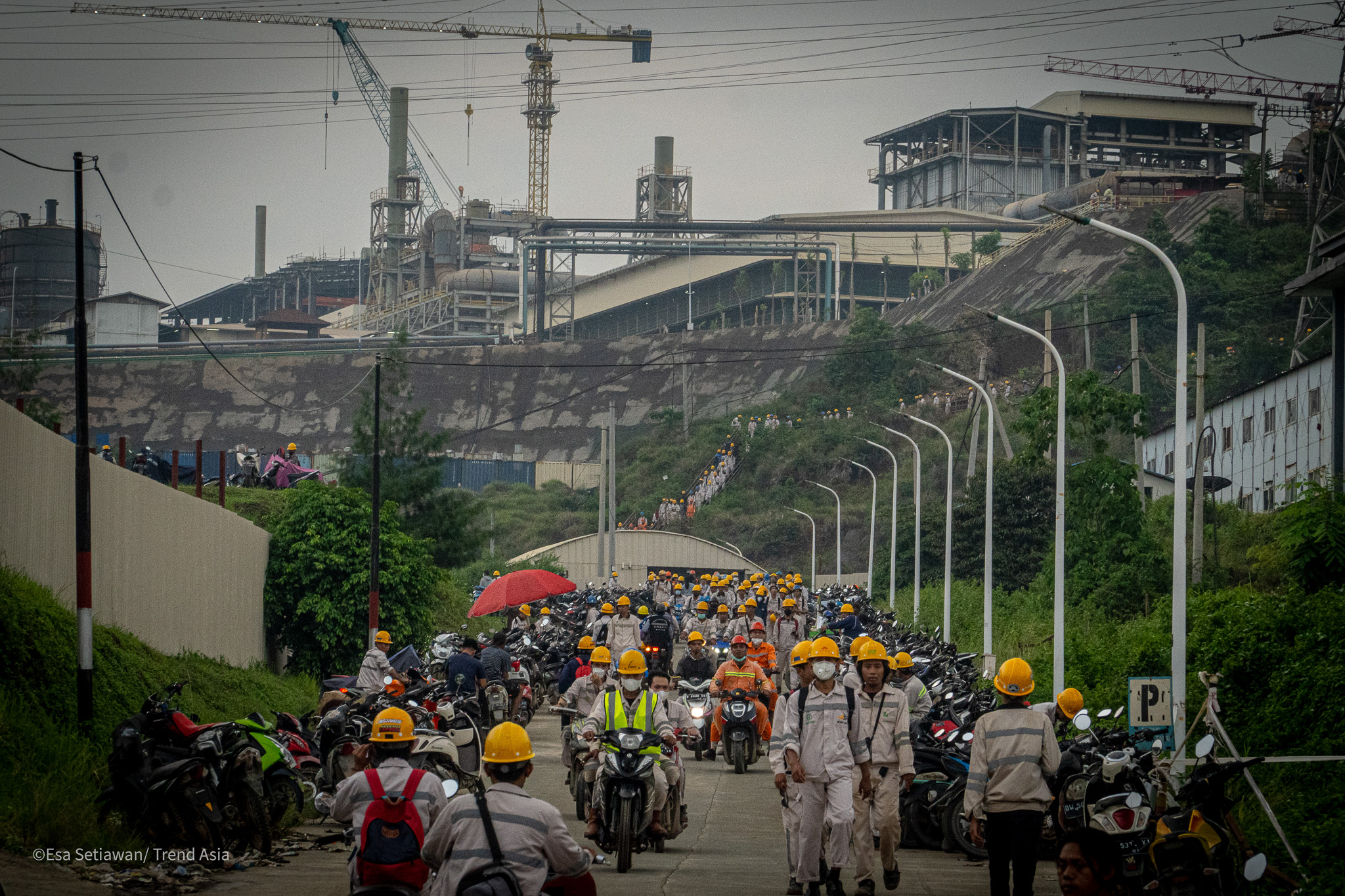Laborers in the nickel industry in Indonesia Morowali Industrial Park (PT. IMIP), by Esa Setiawan/ Trend Asia.
- The International Finance Corporation (the World Bank Group’s private lending arm) has indirectly financed captive coal development in Indonesia, finds a new report released today by climate and human rights organizations.
- The report highlights the cases of two coal-powered nickel refineries on Obi Island in Indonesia, which are funded by the IFC’s financial intermediary clients. The IFC has indirectly financed at least one of these projects.
- ‘Captive’ coal units [1] are often constructed to power the processing of metals, such as nickel or steel, deemed critical to decarbonisation efforts.
- While nickel processing plants play a role in electric vehicle supply chains, their use of captive coal is undermining energy transition efforts and causing harm to communities.
- The report argues that the publicly-funded Multilateral Development Banks (MDBs) are at risk of funding a boom in climate-busting ‘captive’ coal, despite commitments to end coal funding and align with global efforts to phase out fossil fuels.
A new analysis, published today by Recourse, Trend Asia and Inclusive Development International, demonstrates that publicly-funded Multilateral Development Banks are at risk of funding a wave of ‘captive’ coal expansion in climate-vulnerable countries, despite commitments to shift funds from fossil fuels to renewable energy.
Loopholes in existing policy commitments to end coal funding from the World Bank and the International Finance Corporation (the Bank’s private sector arm) mean that these institutions can still fund ‘captive’ coal units designed to support industrial processes [2]. The report highlights two examples of captive coal projects in Indonesia that have been financed by Hana Bank Indonesia and OCBC NISP, financial intermediary clients of the IFC, and argues that the IFC has indirectly financed at least one of these projects.
Captive coal units, usually constructed to support industrial processes such as metal smelting or cement production, are set to become more common in the coming decade. For example, in Indonesia, while the government has committed (under its Just Energy Transition Partnership Plan) to reduce grid-connected coal capacity by almost half between 2030 and 2045, it is set to more than double its captive coal capacity (from 14.2 GW to 32.7 GW) to power its burgeoning transition minerals industry [3]. As a result, captive coal expansion will lead to an overall increase in Indonesia’s coal capacity up until 2045, undermining any reductions in greenhouse emissions achieved through coal decommissioning.
Daniel Willis, finance campaigner at Recourse, said: “At present, the World Bank Group is blind to the risks that captive coal poses to people and planet. It would be a great irony if, in the name of financing the production of materials needed for the renewable energy transition, multilateral development banks also financed the rapid expansion of climate-busting captive coal. The World Bank Group must focus on supporting climate projects that do no harm, and that accelerate, rather than hold back, the decarbonization of industry.”
The report is published alongside a case study [4] on the impacts of nickel processing and captive coal development on Obi Island in Indonesia, which include air pollution, health problems, biodiversity loss and exacerbated poverty. As the case study details, the IFC has indirectly financed at least one of these projects via a financial intermediary client. Another financial intermediary, which the IFC has funded to invest in climate-friendly projects, has also funded a separate coal-powered nickel facility on the island.
Novita Indri, energy campaigner at Trend Asia, said: “An energy transition process that still leaves room for coal use is not appropriate or equitable. More coal use will only bring us to the brink of failing to achieve the Paris Agreement goals and will exacerbate the damage and suffering of the environment and people living around Indonesia.”
The report calls on the World Bank Group to close loopholes in its existing policies to ensure that it does support projects related to captive coal, and that it instead supports renewable energy alternatives that do no harm for powering industries. Campaigners are also calling on all Multilateral Development Banks to improve the transparency of financial intermediary investments, and on investors that have supported coal projects to provide remedial action for affected communities.
David Pred, Executive Director of Inclusive Development International, said:“Captive coal power is still coal power, whatever it’s used for, and comes with the same human and environmental costs. Neither the plants nor the projects that depend on them can be called green and they shouldn’t be getting backing–directly or indirectly–from the World Bank or any institution that is committed to sustainable development.”
END
Photo: Captive coal power plant behind a school on Obi Island. Credit: Esa Setiawan/Trend Asia.
Notes
- ‘Captive’ coal units are coal-fired power plants that exclusively serve industrial facilities, rather than providing energy to the grid.
- For example, the IFC’s Green Equity Approach explicitly states that its definition of coal-related projects “excludes captive coal-fired power plants used for industrial applications”. See Page 9: https://www.ifc.org/content/dam/ifc/doc/2023-delta/ifc-approach-to-greening-equity-investments-in-financial-institutions.pdf
- Just Energy Transition Partnership. (2023). Comprehensive Investment and Policy Plan 2023, p.84. https://jetp-id.org/storage/official-jetp-cipp-2023-vshare_f_en-1700532655.pdf.
- The two coal-powered nickel smelters in question are the PT Halmahera Jaya Feronikel ferronickel smelter and the PT Halmahera Persada Lygend HPAL nickel refinery.


